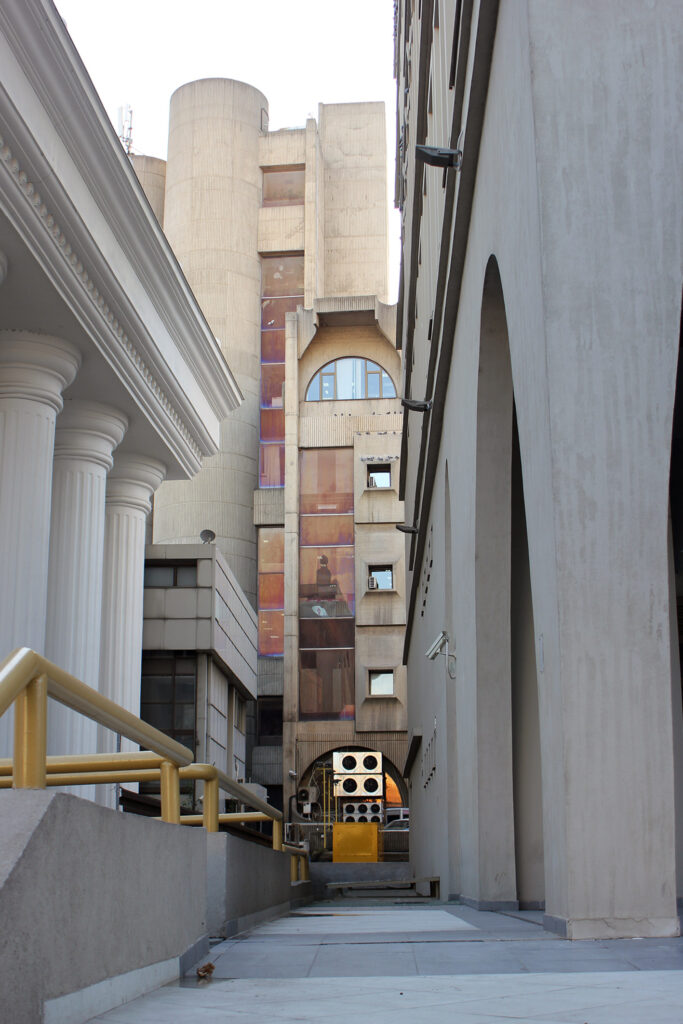
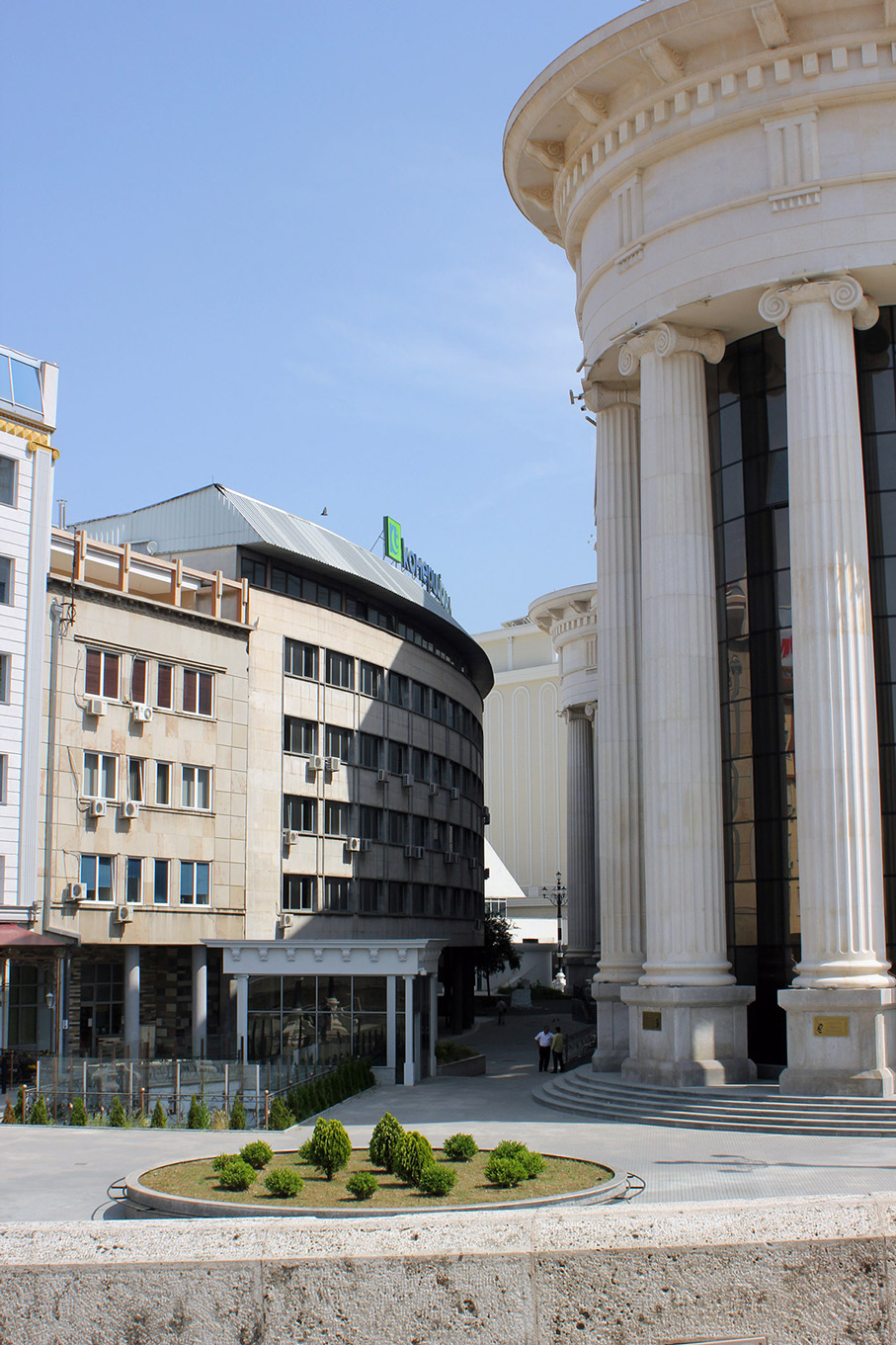
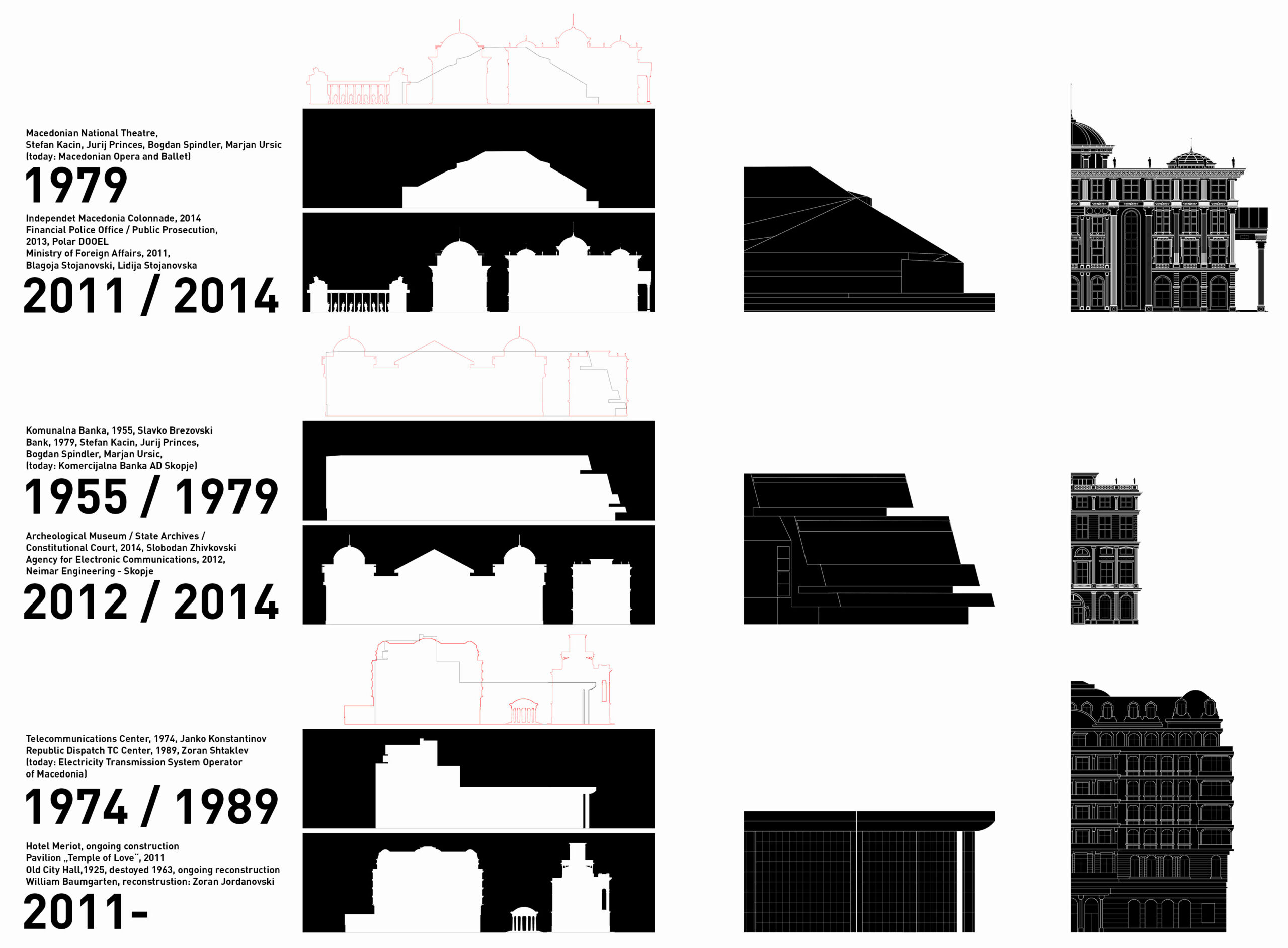
The last tactic of this catalog is the tactic hide. This is the method of ejecting certain landmarks or buildings out of sight. Hide is closely related to the tactic disconnect. Hide is a tactic which (de)constructs architectural memory by not directly modifying existing architecture, but by concealing one and displaying other, depending on its relation to the main strategic goal. The key principal of this method is selecting a crucial, characteristic view of a landmark or building, associated with the history one wants forgotten, and blocking it by adding new layers of architecture in front of it, which complements the newly constructed history. In that sense, hiding architectural memory involves not only neglecting, but also inventing one. There is a swap of stories being made, an exchange of histories. In order to hide an architectural memory, one needs to produce a new one, which will be placed in front of it.
If the refacade tactic was dealing more with reformulating, rather than obscuring, the hide tactic is doing the opposite.
By comparing certain aspects of the shown examples, it can be concluded that the main object of interest of the hide tactic is appearance. Its primary ambition is to highlight the presence of the new architecture in the strategically picked views and to construct a new postcard-image, whereas substance and spatial values are neglected.
The architectural styles chosen for the newer architecture are creating a much older-looking appearance than the one they are covering, as they are trying to convince the viewer that they have history to tell. But, when comparing the dates of construction, it is obvious that the hidden architecture is the one that carries memories from actual history.
Looking at the scale and silhouette comparisons, it becomes very clear that the guiding parameter while producing the new silhouette is the complete covering of the previous one. The new buildings have been adjusted so that they conceal the architecture behind them as much as possible.
Newly constructed ‘old’ architecture is just as coulisses in a theater play. They are there to help us visualize fiction, as this is just a story and not reality.
“…Historic fabric is seen as an unbiased, objective witness of events past, allowing for an ongoing interpretation (a human construct) of that fabric that is subjective and changing.“– Gustavo Araoz, President at ICOMOS
Can the subjective interpretation of the witnesses of events past continue, if they have been concealed?
Is hiding architectural memories visually actually erasing their existence and stopping the discussion?
What kind of a subjective interpretation will start when one is very well aware that the old-looking tissue hasn’t witnessed the past it is trying to be associated with?
Will the human construct eventually make the unreal story history or will it start a discussion about the strategy behind the new buildings and the tactic of hiding architectural memory?
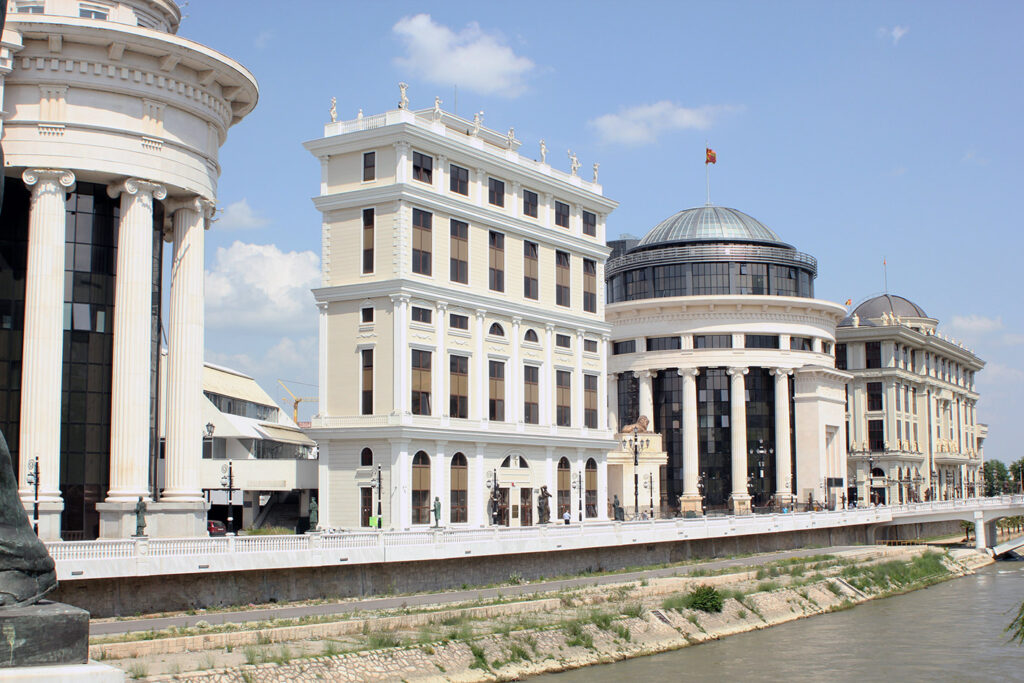
The Macedonian Opera and Ballet being concealed from the river bank, 2015
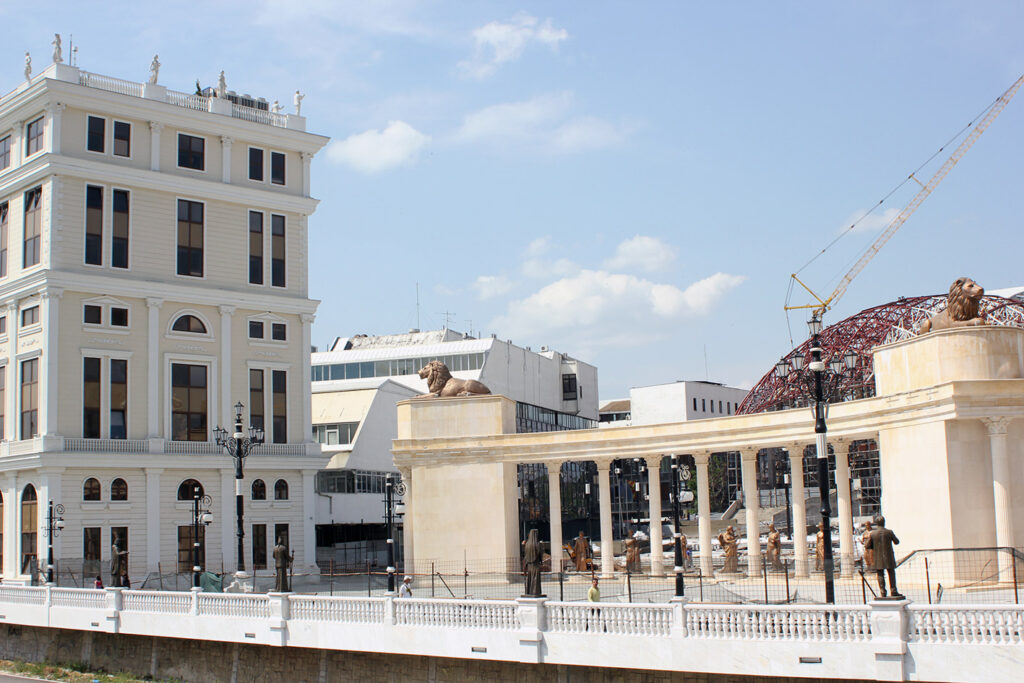
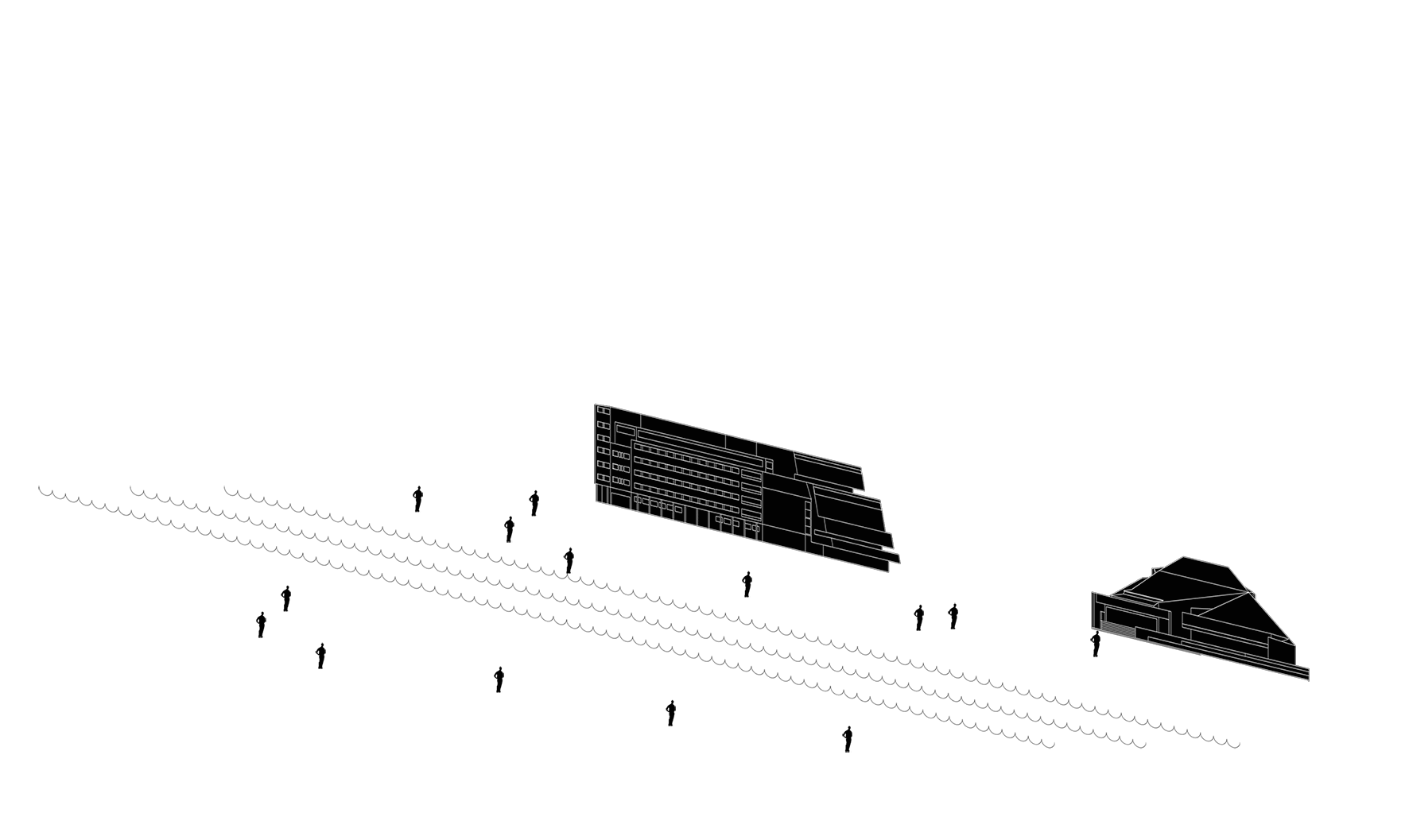
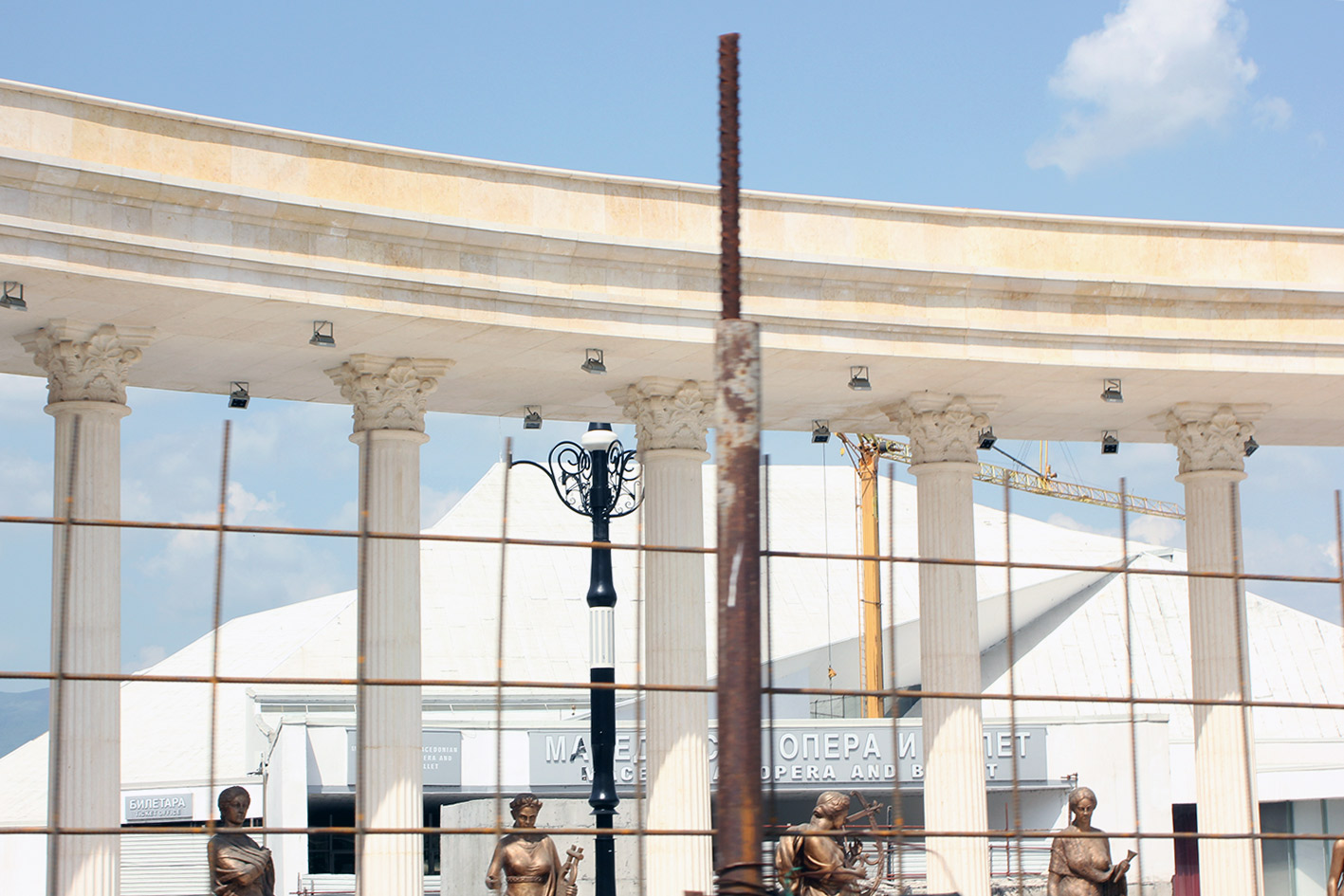
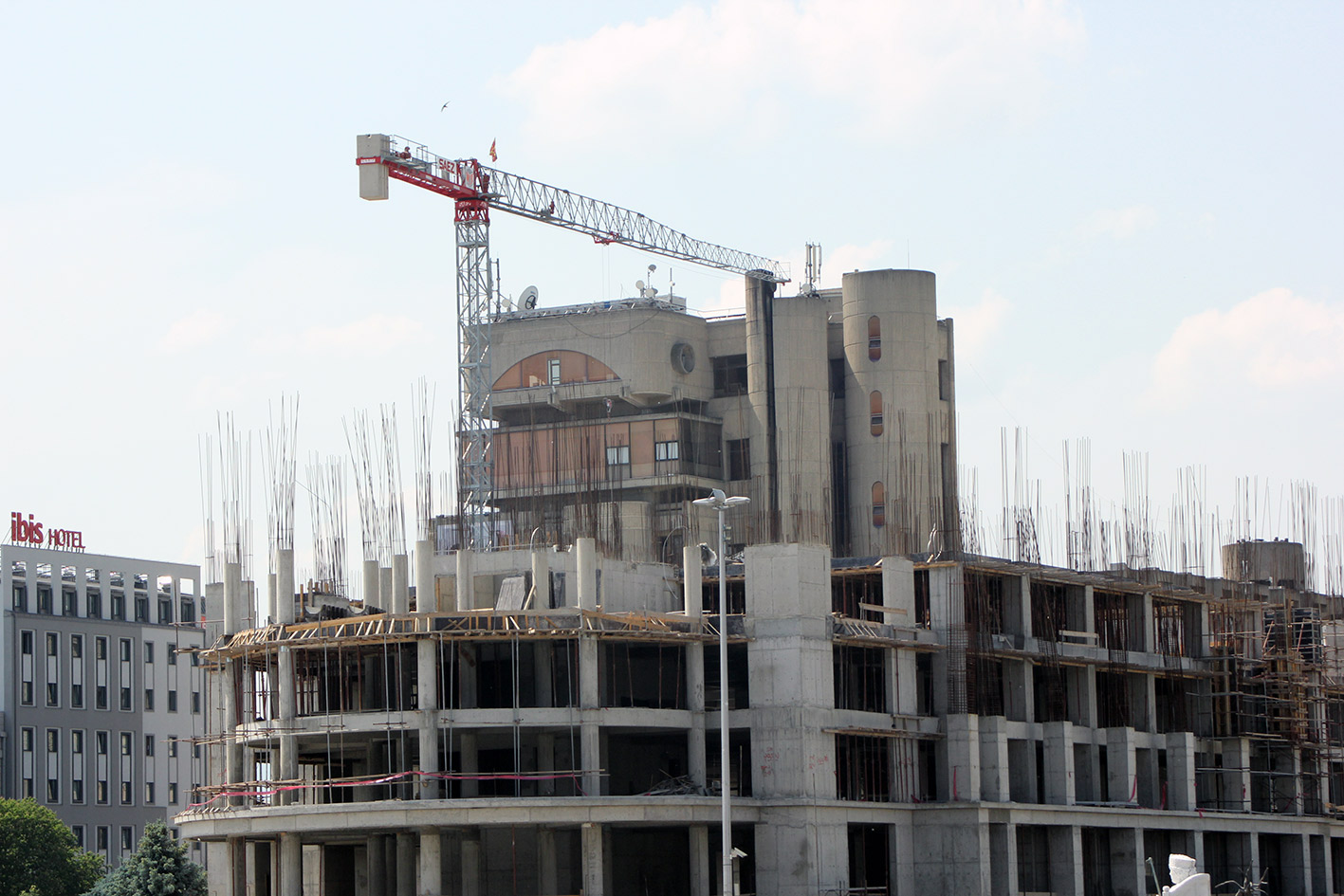
The Telecommunications Center being concealed from the main city square, 2015